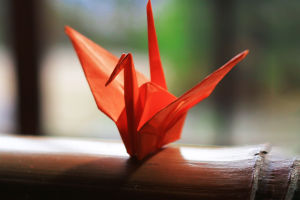
Fascinating Airplane Facts

Airplanes are marvels of modern engineering, and they come with a plethora of fascinating trivia that might surprise you.
Let's delve into some of these lesser-known facts about aviation together.
Have you ever wondered why there's a small hole in airplane windows?
That tiny hole in the airplane window next to your seat is not a cause for concern; it's there for a very important reason. It serves to regulate cabin pressure.
Airplane windows consist of multiple panes, and the small hole helps to reduce stress on the middle pane during flight. So, the next time you find yourself pondering the purpose of that hole, rest assured it's a critical element of flight safety.
Have you noticed that the windows and seats on airplanes are often misaligned?
Related
 Modern travel: From eco-friendly walking to high-speed rail, explore diverse mobility options.
Modern travel: From eco-friendly walking to high-speed rail, explore diverse mobility options.
 Things to note as autumn arrives.
Things to note as autumn arrives.
 The typewriter's birth revolutionized text processing and communication, a tale of innovation and transformation.
The typewriter's birth revolutionized text processing and communication, a tale of innovation and transformation.
 Japanese origami cranes, symbols of peace, hope, and resilience, embody a world of meaning through intricate paper folding.
Japanese origami cranes, symbols of peace, hope, and resilience, embody a world of meaning through intricate paper folding.
 Flowers hold cultural and symbolic importance all over the world, and Italy is no exception.
Flowers hold cultural and symbolic importance all over the world, and Italy is no exception.
 Wind energy transforms global power landscape.
Wind energy transforms global power landscape.
It may seem odd, but the misalignment of windows and seats on airplanes is typically due to airline decisions. Airlines determine the number of rows of seats on each plane, and not all airlines use the same number of rows.
When they position seats, they don't always consider the placement of windows, leading to this misalignment.
Are you aware of which seat on an airplane is the safest?
While airlines and the Federal Aviation Administration (FAA) typically state that there are no inherently safer seats on airplanes, data from Popular Mechanics tells a different story.
According to their research, seats located toward the back of the plane have a 40% higher chance of survival in the event of an accident compared to those in the front rows.
Have you ever questioned the reason behind dimming cabin lights during landing?
One lesser-known safety measure during landing is the dimming of cabin lights. This is done to allow passengers' eyes to adjust to the darkness, ensuring that if an emergency evacuation is needed, everyone's vision is already adapted to low-light conditions.
Is it possible to open the cabin door during a flight?
Rest assured, it's impossible to open the cabin door during a flight due to the high pressure inside the aircraft. At cruising altitude, the entire fuselage of the aircraft is subjected to immense pressure, making it physically impossible to open the cabin door. This ensures passenger safety.

Is flying during a lightning storm safe?
Generally, flying during lightning weather is safe because aircraft are designed to withstand lightning strikes. The metal skin of the plane provides protection, and there are lightning protection systems in place to dissipate electrical buildup.
Being inside a metal room, such as an airplane, is one of the safest places during a lightning storm. The FAA estimates that every aircraft in use in the United States is struck by lightning at least once a year.
Why do your ears feel pressure during flights?
The discomfort you feel in your ears during flight is due to the change in air pressure. As the plane ascends, the surrounding air becomes thinner, while the cabin air is pressurized to a specific level. This pressure difference causes the air inside our bodies, including our ears, to expand, leading to ear pain.
What's behind the cramped seating on airplanes?
The response can be condensed into a single word: money. Airlines maximize their revenue by squeezing more passengers onto planes. A study by travel analyst Bill McGee revealed that the space between airplane seats has decreased over the years.
Since 1990, the legroom between seats has shrunk by 2 to 5 inches. However, major airlines are introducing various cabin classes, such as economy class, super economy class, business class, and first class, to accommodate passengers with varying comfort preferences.
How long can oxygen masks on an airplane supply oxygen in an emergency?
In an emergency, oxygen masks on an airplane can provide oxygen for approximately 15 minutes. Fortunately, pilots are trained to descend the plane to a safe altitude within that time frame to ensure that passengers can breathe normally.
These intriguing facts shed light on the often-unseen aspects of air travel, making your next flight a little less mysterious and a bit more informative. Enjoy your journey, armed with this newfound knowledge about airplanes!